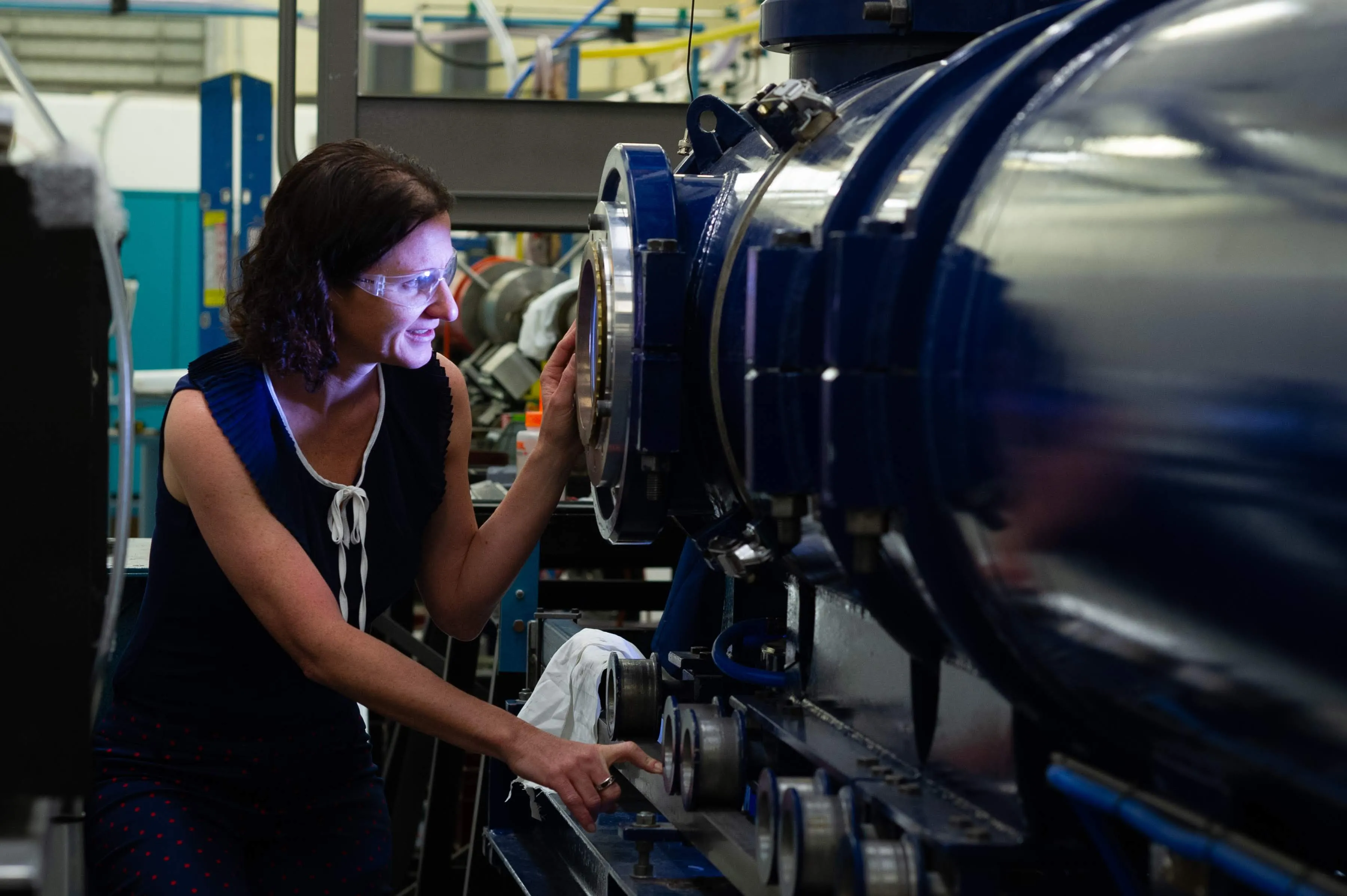We celebrate 60 years of the Spitfire Association and commemorate the founders of the Spitfire Memorial Defence Fellowship. As we look forwards, President of the Spitfire Association, Geoff Zuber spoke with several our Fellows to get their reflections on what the Spitfire Memorial Defence Fellowship means to them and how it helps Australia remain resilient.
Fellow: Dr Bianca Capra
Focus area: hypersonics
Year of Fellowship: 2021
How has the Fellowship supported your research, and what difference has it made?
The Spitfire Memorial Defence Fellowship has allowed me to advance my research in hypersonics, specifically on the thermal state of highspeed structures. It has also allowed me to recruit a young female aerospace engineer to help on the project and grow my research group. This Fellowship has allowed me to advance my technical expertise and provide the seed for growth in my research group while mentoring and training our future leaders in this area.
For my Fellowship, I am conducting fundamental research on how we can use additional energy to structurally damage an analogous hypersonic vehicle panel that is already very hot, and at the limits of material operability. At the core of my research for this Fellowship is extending our knowledge on thermally stressed and very hot structures flying in excess of four times the speed of sound. My innovation and further contribution to this field is to add further energy into an analogous vehicle panel under these conditions to quantify the impact this has on temperature, stress and deformation.
The aim of my research is to establish a correlation and mechanism to predict how much energy would be required to sufficiently damage the panel and render a vehicle non-viable. This work builds on our collective strong understanding on how to design hypersonic vehicles to remain structurally sound during normal flight and extending our vehicle designs to better defend against attack.
Australia has a long history with hypersonics. Australian researchers where the first to produce net positive thrust from a scramjet engine in a highspeed wind tunnel, first to demonstrate supersonic combustion in flight and have a long history in understanding the flow and heating associated with vehicles re-entering Earths atmosphere. The aim of the research I am doing is to create a step-change in how we apply our hypersonics knowledge, so we can refocus on where we put our expert knowledge and focus.
The Spitfire Memorial Defence Fellowship allows me to build a 'hypersonic tree' of knowledgeable research and researchers and use this to find real, practical solutions to defending Australia. Investing in research in Australia means we can keep it local, and this provides exciting career options for young people with an interest in this area of study.
I believe that now is the time for hypersonics in Australia. Enhancing our already strong expertise in these areas is important to expand our local capabilities and skills. Hypersonics is an exciting area with really hard challenges, we will only find solutions to these challenges by including and supporting people with different perspectives and skills in this area.
What advice would you have to potential Fellowship applicants?
My best recommendation is to speak with previous Fellowship recipients and learn about their experience. Second, find yourself a mentor and sponsor who will review and critique your Fellowship application and provide valuable advice to your proposed research topic and plan.
This is exactly what I did before I applied. I was aware of the Fellowship from colleagues, who were past Fellows. So, I chatted with them before I applied; this included chatting with WGCDR Keirin Joyce CSC whose experience helped me to understand the aims and flexibility of the Fellowship. This strategy meant that, most of my questions were answered by my colleagues and the information provided by the Spitfire Association, and I had a strong application.
I have a strong personal commitment to supporting greater diversity in aerospace engineering. I have also benefited from strong mentorship and sponsorship. Because of these I really enjoy mentoring and supporting others by sharing my knowledge and experience to support my colleagues who are considering applying.
If you could meet the founders of the Fellowship today – AVM Lyndon Compton AO OBE, FLTLT Edward (Ted) Sly DFC and FLTLT Peter Watson DFC, what would you say to them about your experience of the living memorial they established?
First, I would thank them for having the foresight to setup the Fellowship and, in so doing, support innovation locally, keeping Australian sovereign capabilities in Australia.
Then, I would thank them for setting up the Fellowship for future generations of Australians, not just the Fellows awarded the Fellowships. This funding allows today's Fellows to be courageous and put their ideas forward; ideas that will help Australia.
This allows Fellows to think forward and look for solutions to challenges we face as a nation. Just as the founders had the foresight to setup the Fellowship, so today's Fellows can test their ideas and put forward innovative concepts and solutions to current and future challenges.
It is good to see the Fellowship cover the full spectrum of research into ideas that enhance the defence of Australia. This allows Fellows to 'break the mould' and tackle different research topics and take inventive research approaches.
Lastly, I would thank them for believing in, and supporting my work and vision and understanding that great innovation only comes with diversity in thinking.
How do we protect our intellectual property and gain export earnings from it?
It is important to have a long-term strategy for investing in innovative Australian research and in keeping our intellectual property in Australia, while collaborating globally.
Hypersonics is a global enterprise, so international collaboration is important to moving this field of study forwards. However, we also want to develop local skills and technologies that can be used by Australia and our allies; Investing locally in this field of research is vital in my opinion. Australia has a long history in hypersonics. We have a wealth of knowledge and skills with brilliant minds working in this area. I think Australia's future in this area is exciting. To harness completely, we need to support and encourage more young engineers to consider specialising in hypersonics.
It is not about producing the next big thing by the end of 12-months of study; it is about developing Australia's long-term capabilities and skills. That is where the Fellowship is visionary in my opinion and different to others. It is prepared to invest in fundamental research with long term goals, giving the researcher the freedom to determine how they conduct their research. This enables a great deal of flexibility which leads to creative problem solving and innovative solutions.
Sometimes building sovereign capability is the goal rather than focusing on export earnings. Hypersonics is one such area. I would like to see us, as a society, excite young women and men into engineering and to then specialise in hypersonics. Investing in our future generations and the wealth of highly technical knowledge they create is the ultimate goal and the best sign of success.


